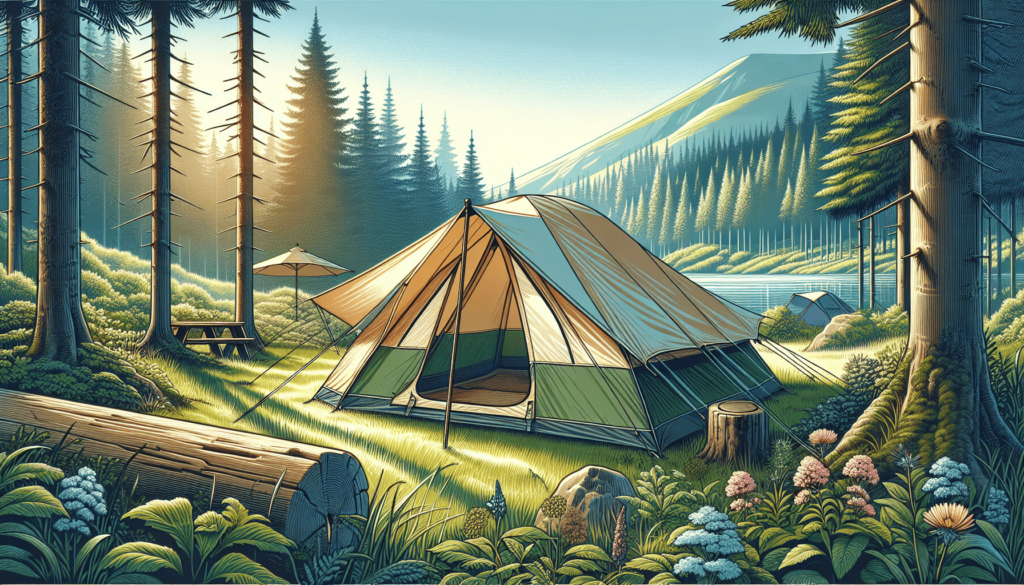Have you ever stood in the aisles of an outdoor supply store or browsed through countless online listings, overwhelmed by the sheer number of camping tent options available? Choosing the perfect tent for your camping adventures is no small task, but with a bit of guidance and some clarity on what exactly you’re looking for, it becomes a rewarding journey. Let’s embark on a discussion that’ll help you make an informed decision the next time you’re tent shopping.
Understanding Your Camping Needs
The type of camping you plan to do greatly influences the kind of tent you’ll need. Just like you wouldn’t wear the same clothes to a fancy dinner and to a casual BBQ, different camping conditions call for different types of tents.
Types of Camping
Many aspects of camping can dictate your tent choice, and it’s worth thinking about these before making a purchase. If you’re new to camping or just looking to refine your gear, here’s a starting point:
-
Backpacking: Are you planning on hiking long distances and need something lightweight?
-
Car Camping: Will you drive to your campsite and park close by, allowing for a bulkier or more comfortable option?
-
Festival Camping: Is your tent more for hanging out in style at a crowded event than enduring the elements?
-
Winter Camping: Do you need something specialized for extreme cold or snow?
Weather Considerations
The climate you’ll be camping in should be a key factor in your decision. A summer tent won’t fare well in snowy conditions. Here’s how different weather conditions can influence your choice:
-
Seasonality: Three-season tents are versatile but may not hold up well in heavy snow. Four-season options are designed for year-round use, especially in winter.
-
Rain and Wind: Look for waterproof and wind-resistant features if you’re expecting adverse weather.
-
Temperature Regulation: A tent designed for warmth retention in cold climates might be unnecessary in the balmy South.
Key Features to Look For
Once you’re clear on your camping style and the weather conditions you might face, it’s time to consider the specifics of tent design that will impact your camping comfort and practicality.
Tent Size and Capacity
The rule of thumb in tent capacity is to consider how many people will sleep inside. However, don’t ignore the gear, and perhaps a little extra room for comfort if someone rolls a bit in their sleep.
-
Number of Occupants: If you’re a family of four, look for options that accommodate five or even six if space is a priority.
-
Gear Space: Consider a vestibule or a larger tent if you have a lot of gear.
-
Room for Movement: Tents aren’t just for sleeping; ensure there’s space for evening relaxation or a game of cards when it’s raining.
Weight and Portability
Especially for backpackers or those trekking to remote sites, weight is a critical component. Here’s how to balance weight and features:
-
Material Choice: Lightweight materials can be more expensive but worth it for ease of transport.
-
Design: A well-designed ultralight tent doesn’t skimp on durability or weather protection.
Ease of Setup
Imagine arriving at your campsite with the sun setting, and you’re fumbling with tent poles and fabric. Ease of setup can be a game-changer.
-
Freestanding vs. Non-freestanding: Freestanding tents are typically quicker to set up but might require more stakes in windy conditions.
-
Color-coded Poles and Clips: These can significantly cut down setup time and hassle.
Durability and Material
The last thing you need is for your tent to tear in the middle of nowhere. Durability often correlates with material and build quality.
-
Fabric Denier: A higher denier means stronger fabric, but also heavier.
-
Seam Sealing: A durable tent will have factory-sealed seams to prevent leaking.
-
Zipper Quality: High-quality zippers will resist fabric snags and rust over time.
Ventilation
Breathable tents ensure that you remain comfortable by allowing airflow, which reduces condensation, a key feature when selecting a tent.
-
Mesh Panels: Provides excellent ventilation but can lose heat quickly in cold weather.
-
Windows and Vents: Adjustable openings can help regulate airflow and keep the climate inside the tent comfortable.

Specialty Features
Alright, you’re starting to get a handle on the basics, but what about those extra features that can make your camping experience that much sweeter?
Vestibules and Awnings
Extra space for boots, backpacks, or a place to cook in bad weather can seriously improve your camping comfort.
-
Vestibules: These provide a covered space outside the main tent body for gear storage.
-
Awnings: Useful for creating a shade or rain-protected outdoor area.
Interior Pockets and Gear Lofts
Keeping your tent tidy can enhance the camping experience, and internal organization features contribute positively.
-
Storage Pockets: Perfect for small items like headlamps, phones, and maps.
-
Gear Lofts: Elevated storage solutions to keep the floor uncluttered.
Electrical Power Ports
In our increasingly electronic world, a port for a power cord can be a nice modern touch, especially for family or festival camping.
Cost vs. Value
In the end, price does matter. While a higher price tag might lead you to think better quality, that’s not always the case.
Budget Considerations
Understand your budget constraints but don’t compromise on quality where it matters.
Balancing Features and Cost
Consider which features are necessary for your camping conditions and which ones you might forego to stay within budget. A feature-rich tent that seems expensive up front can be more valuable over time with durability and practicality.

Making Your Decision
Now that we’ve armed you with loads of information, it’s time to use it. Here’s a quick recap to keep you focused:
-
Identify Your Needs: Are you hiking or driving to your campsite? What weather conditions will you encounter?
-
List Your Priorities: Weight, size, ease of setup. What are your top three must-haves?
-
Consider Your Budget: What are you willing to spend, and where can you compromise?
Practical Checklist for Choosing a Tent
| Feature | Importance Level | Notes |
|---|---|---|
| Tent Size & Capacity | ||
| Weight & Portability | ||
| Ease of Setup | ||
| Weather Resistance | Waterproof/windproof capabilities | |
| Ventilation Options | Airflow systems and condensation reduction | |
| Durability & Material | Fabric quality and seam strength | |
| Specialty Features | Vestibules, awnings, storage solutions |
Final Thoughts
A well-chosen tent can be your sanctuary in nature, providing the necessary protection and comfort to make your camping trips memorable for all the right reasons. Remember, the best tent is the one that suits your specific needs and conditions. Happy camping, and may your tenting experiences always bring you closer to nature and those you choose to camp with.




